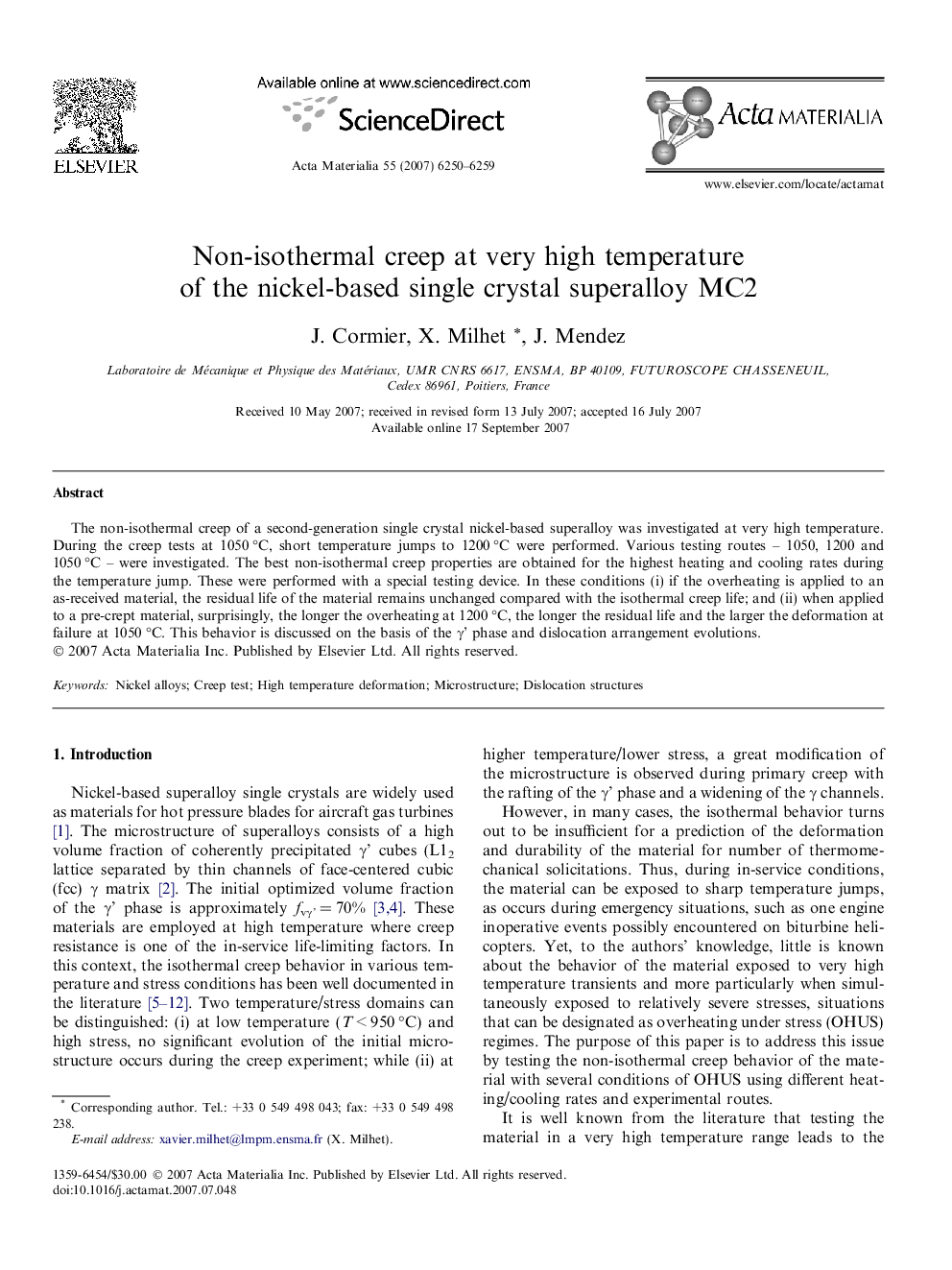| Article ID | Journal | Published Year | Pages | File Type |
|---|---|---|---|---|
| 1449432 | Acta Materialia | 2007 | 10 Pages |
The non-isothermal creep of a second-generation single crystal nickel-based superalloy was investigated at very high temperature. During the creep tests at 1050 °C, short temperature jumps to 1200 °C were performed. Various testing routes – 1050, 1200 and 1050 °C – were investigated. The best non-isothermal creep properties are obtained for the highest heating and cooling rates during the temperature jump. These were performed with a special testing device. In these conditions (i) if the overheating is applied to an as-received material, the residual life of the material remains unchanged compared with the isothermal creep life; and (ii) when applied to a pre-crept material, surprisingly, the longer the overheating at 1200 °C, the longer the residual life and the larger the deformation at failure at 1050 °C. This behavior is discussed on the basis of the γ’ phase and dislocation arrangement evolutions.
